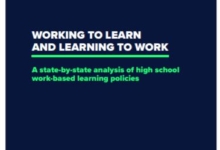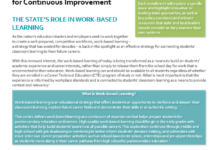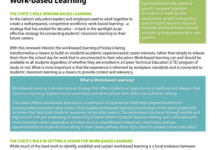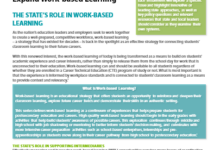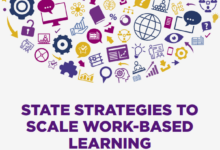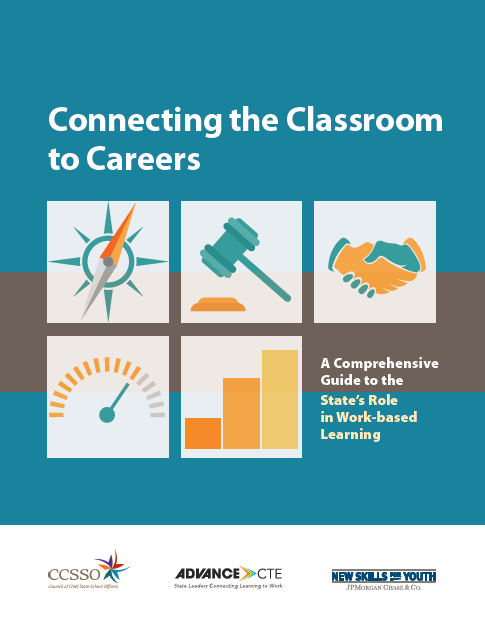As state education agencies turn their focus to preparing students for both college and careers, work-based learning is becoming an increasingly popular strategy for students to reinforce and deepen their classroom learning, explore future career fields and demonstrate their skills in an authentic setting. While much of the hard work to identify, establish and sustain work-based learning is a local endeavor between schools and employers, the state does have a role in creating the right environment that enables opportunities to grow, flourish and multiply. States must set a clear vision for work-based learning and provide guidance as to how it should be defined, delivered, integrated into existing efforts and made accessible to all students.
This comprehensive guide builds on research from the “Connecting the Classrooms to Careers” series to help states develop and implement a statewide vision for work-based learning. The guide provides key considerations and guiding questions to walk states through the steps of building and scaling a high-quality work-based learning system, drawing on examples from states such as Tennessee and West Virginia to highlight innovative solutions to common challenges. The paper not only builds upon earlier briefs in the “Connecting the Classrooms to Careers” series, but also ties them together into one comprehensive and easy-to-use guide.
Readers can learn about the strategic and deliberate work required in five key areas:
- Establishing a clear and ambitious statewide vision for the work, and using that vision to drive work and coordinate efforts throughout the entire process;
- Creating statewide intermediary organizations or establishing relationships with existing organizations who can serve as intermediaries in order to leverage the expertise and capacity of multiple stakeholders in the most efficient way. States may also leverage school-based intermediaries and coordinators;
- Addressing any major barriers to successful implementation, notably legal barriers and perceptions of legal barriers that might discourage employers from participating;
- Deciding the desired outcomes for work-based learning programs and how those outcomes will be measured. Structures and processes must also be put in place around those measures to ensure continuous improvement of programs; and
- Scaling the program so that it is available to all high school students throughout the state.

